How To Revive A Limp, Wilting Christmas Cactus – And Restore Its Blooming Vitality
A Christmas cactus wilting can be caused by a variety of factors. Diagnose the issue and learn the best cures to restore your holiday plant to full health.
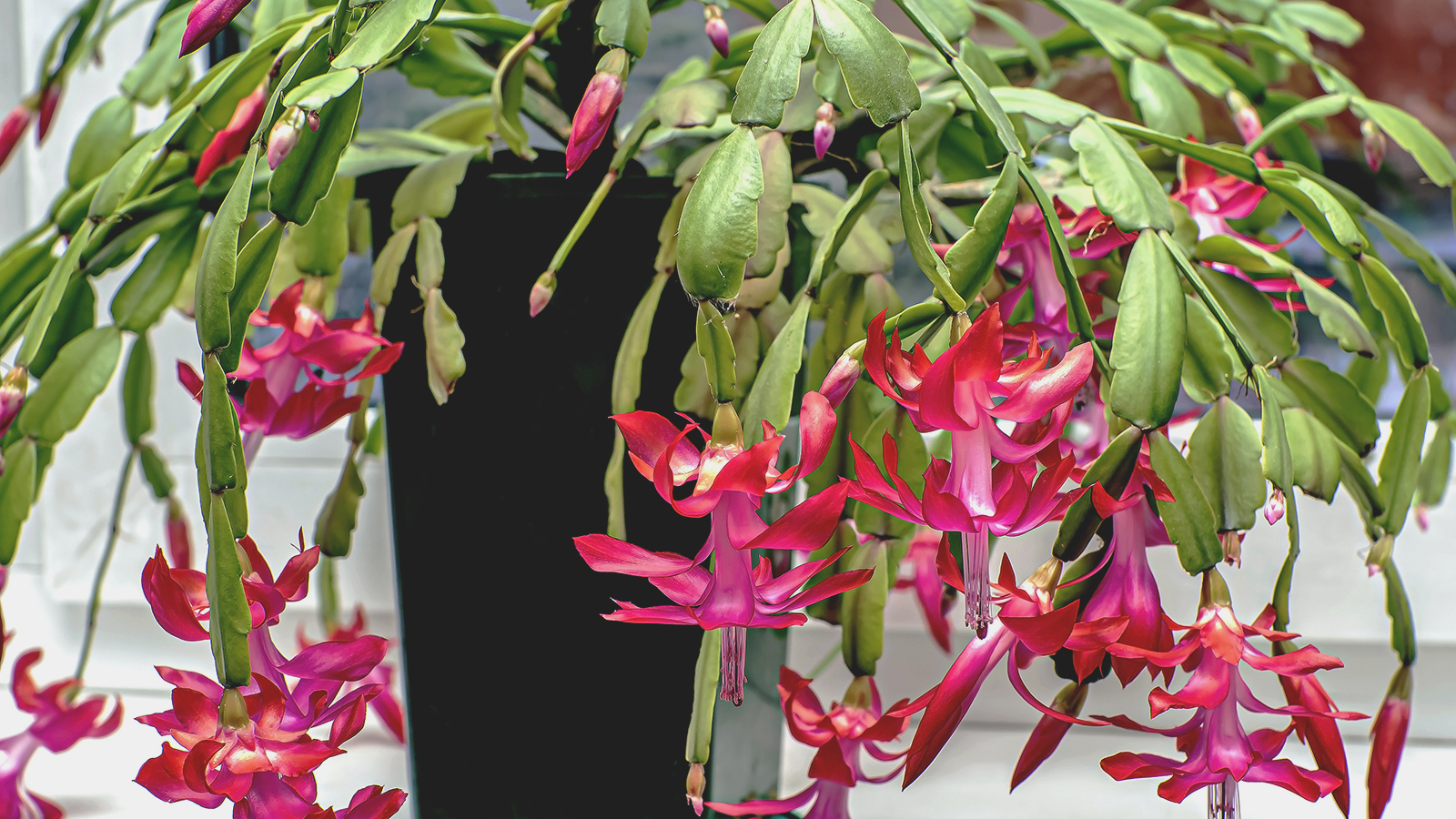

Melanie Griffiths
Christmas cactus wilting woes are all too common for people who pick up this festive plant on a whim without fully understanding its care needs. While it is not a true cactus, the Christmas cactus (Schlumbergera x buckleyi) is a succulent from warmer climates and requires particular conditions to thrive as a houseplant.
Drooping is one of the most distressing Christmas cactus problems for growers, who watch on while their cherished plant withers away, losing vitality and its ability to bloom, heading towards an early demise.
Bear in mind that the Christmas cactus does have a natural arching form, with stems cascaading over the sides of pots. However, it is easy to spot the difference between a healthy and distressed plant. Healthy plants have lush, verdant leaves and are able to flower, while a sick Christmas cactus will be lackluster, off-color, limp, and possibly dry and wrinkled.
Fortunately, Christmas cactus care is fairly easy, and troubleshooting the problem is simple. The advice can also be applied to the two other main types of holiday cactus, as Thanksgiving cactus care and Easter cactus care are very similar.
Here are some potential causes for a limp Christmas cactus and their solutions.
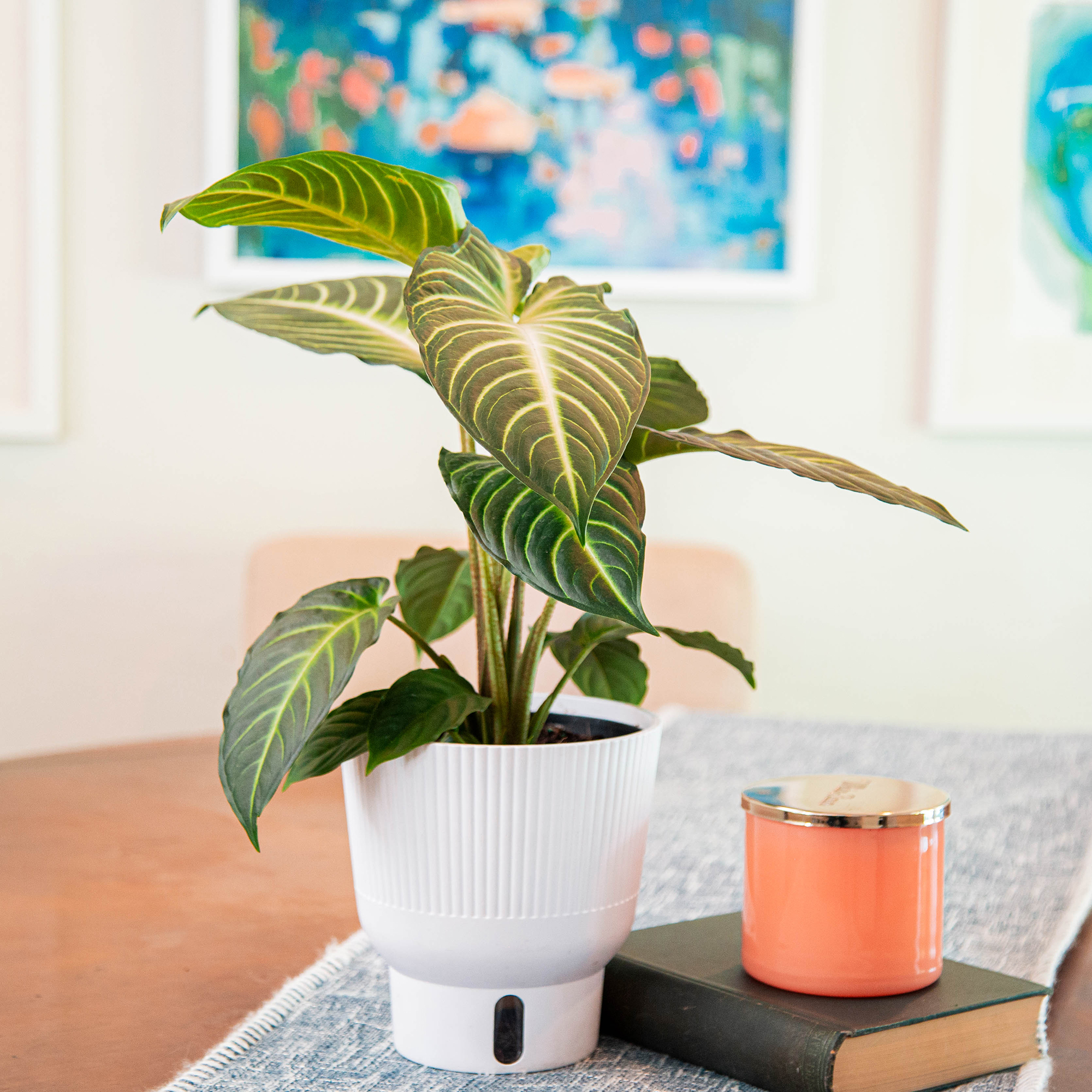
From rare houseplants to practical tools and stylish accessories, the Gardening Know How Shop is the go-to destination for your indoor growing needs.
Why Are the Leaves on My Christmas Cactus Limp?
Native to South American tropical rainforests, the Christmas cactus is an epiphyte plant that grows in the crevices of trees and rocks, getting its moisture and nutrients from surrounding moss, humus, and plant debris.
If the indoor conditions aren’t right, you’ll end up with a Christmas cactus that's limp and wrinkled before getting to enjoy its holiday blooms.
Gardening tips, videos, info and more delivered right to your inbox!
Sign up for the Gardening Know How newsletter today and receive a free copy of our e-book "How to Grow Delicious Tomatoes".
It's important to diagnose the likely culprit before moving on to the cure. Follow a process of elimination, starting with the most common causes.
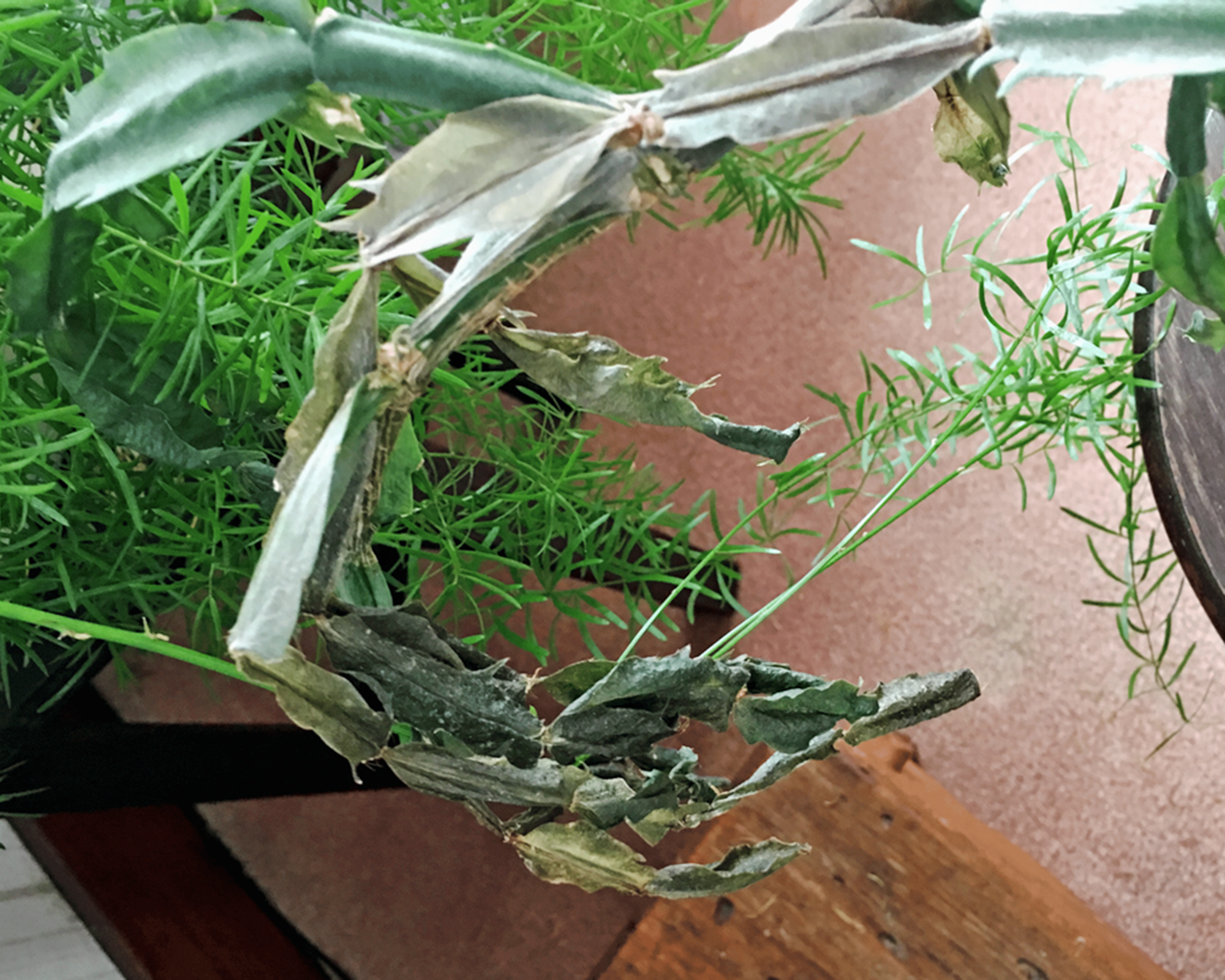
- Overwatering
This is the most likely cause of wilting and drooping. Christmas cactus watering is a delicate balance and it’s very easy to harm plants by overwatering or poor drainage. Once the roots die from standing in soggy soil, they cannot take up water, and the leaves wilt. As well as wilting, the issue may be accompanied by yellowing and dropping leaves. - Underwatering
A limp Christmas cactus may also be caused by a lack of water. Owners often assume they are true cactuses that can tolerate drought conditions. This isn’t true. Too little water and humidity can cause the stems and leaves to droop. - Salt Accumulation
If your plant gets adequate water and has good drainage, the issue could be salt accumulating in the soil. This is most likely an issue in areas with high salt content in the water. Look for a white crust buildup on the pot or soil as a sign. - Too Much Light
If your Christmas cactus drooping is accompanied by scorched leaves, too much sunlight could be the culprit. These plants grow naturally in shaded areas, so a lot of direct, bright light can harm them. - Diseases
Certain Christmas cactus diseases cause wilting and may affect plants. Root rot is the most common disease, usually caused by overwatering and standing water on the roots.
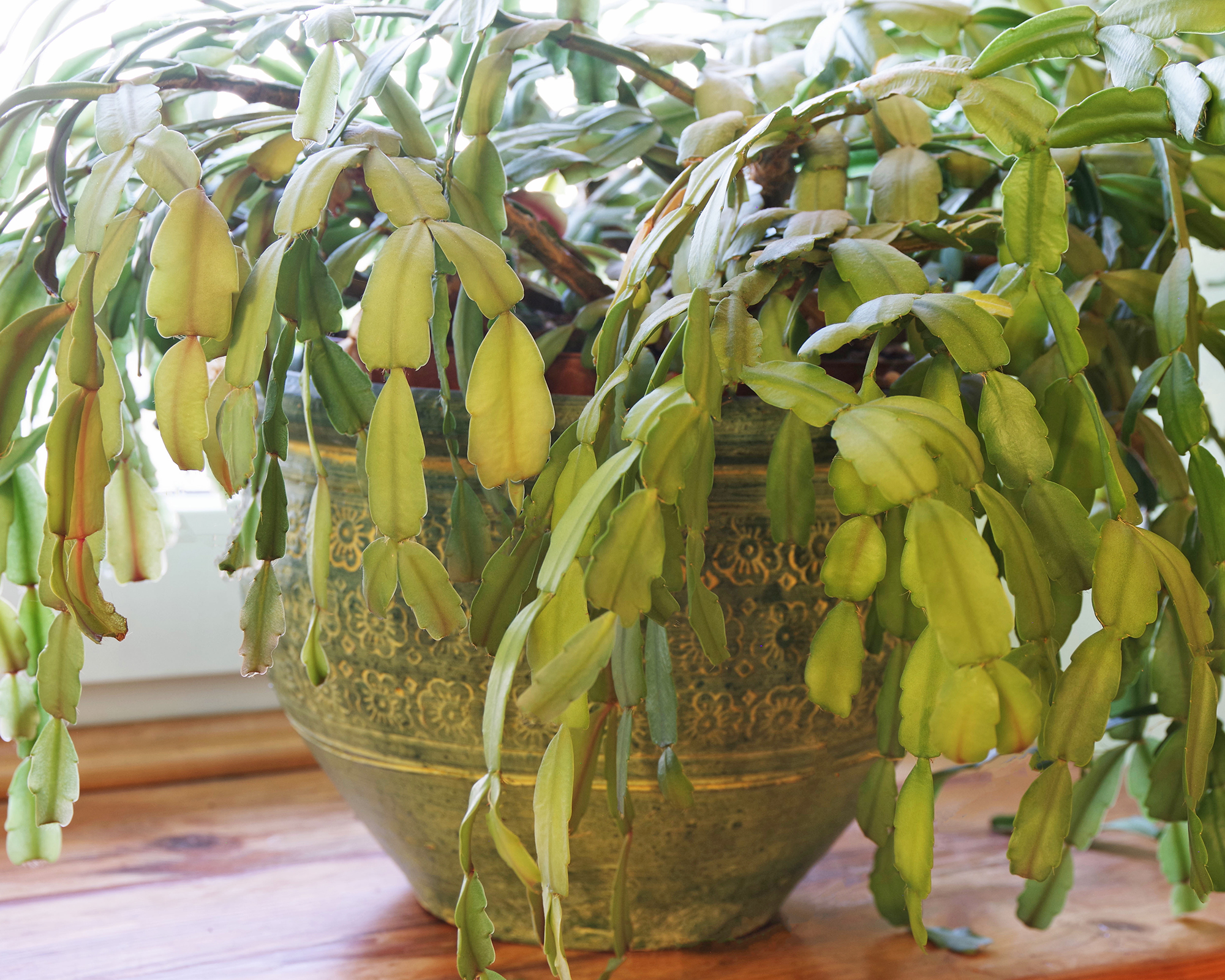
How to Revive a Wilting Christmas Cactus
Determining the cause of drooping is the first step to fixing the problem. If you have overwatered your plant, avoid watering it until the soil has dried. If the soil is very soggy or the roots show signs of rotting, overwatered Christmas cactus care involves removing the plant, letting it dry out, and repotting it in a fresh potting mix.
Repotting a Christmas cactus is usually only necessary every few years, but even if the soil is not soggy, refreshing it may resolve the issue. Bear in mind the plant likes its aerial roots to be confined, so only move up to a slightly larger container, or clean and reuse the existing pot.
The ideal Christmas cactus soil is a mix designed for succulents, or you can make your own by blending three parts potting soil with two parts sand, vermiculite, or perlite, to aid drainage.
If underwatering is the issue, soak the soil, letting the water run through the drainage holes. Water again in a day or two. If you have scorched leaves, move the Christmas cactus to an area that gets some sun protection, especially in the afternoon.
For salt accumulation, consider repotting in a fresh potting mix. In the future, you can avoid salt accumulation by using filtered water. Also, avoid watering the plant by setting the container in water and letting it soak up water from the bottom. This method tends to increase salt accumulation compared to top-down watering.
Unfortunately, root rot isn’t necessarily treatable. If there are only small areas of rot, you may be able to trim off those roots and repot the plant. It’s better to prevent root rot with good drainage and an appropriate potting mix.

Will a Droopy Christmas Cactus Recover?
If you catch the problem in time and take steps to save your Christmas cactus, it can recover. Bear in mind the stress the plant has experienced may result in this year's buds falling off Christmas cactus plants. However, you can expect an outstanding show next winter – or possibly in the spring – if you follow the guidance to making a Christmas cactus bloom.
Unfortunately, if the roots are completely or almost completely rotted from standing water, the plant is unlikely to recover. The good news is that if you know how to propagate Christmas cactus, you have a good chance of regrowing the plant from root cuttings, allowing it to live a new life through its descendants.
This article features products available from third party vendors on the Gardening Know How Shop.

Mary Ellen Ellis has been gardening for over 20 years. With degrees in Chemistry and Biology, Mary Ellen's specialties are flowers, native plants, and herbs.
- Melanie GriffithsSenior Editor
-
 Looking For Plants To Give You The Soft And Fuzzies? Try These 5 Fuzzy Leaf Plant Options
Looking For Plants To Give You The Soft And Fuzzies? Try These 5 Fuzzy Leaf Plant OptionsLovers of texture, drama, silver foliage and tactile plants will adore these special sensory garden additions. These fuzzy leaf plant options will leave you all aglow
By Susan Albert
-
 Get Ready For A Summer Of Hummers! Grow These Full Sun Hummingbird Plants and Flowers
Get Ready For A Summer Of Hummers! Grow These Full Sun Hummingbird Plants and FlowersIf you’re lucky enough to enjoy a sunny backyard, make sure you are maxing out on your pollinator opportunities and grow these full sun hummingbird plants and flowers
By Tonya Barnett
-
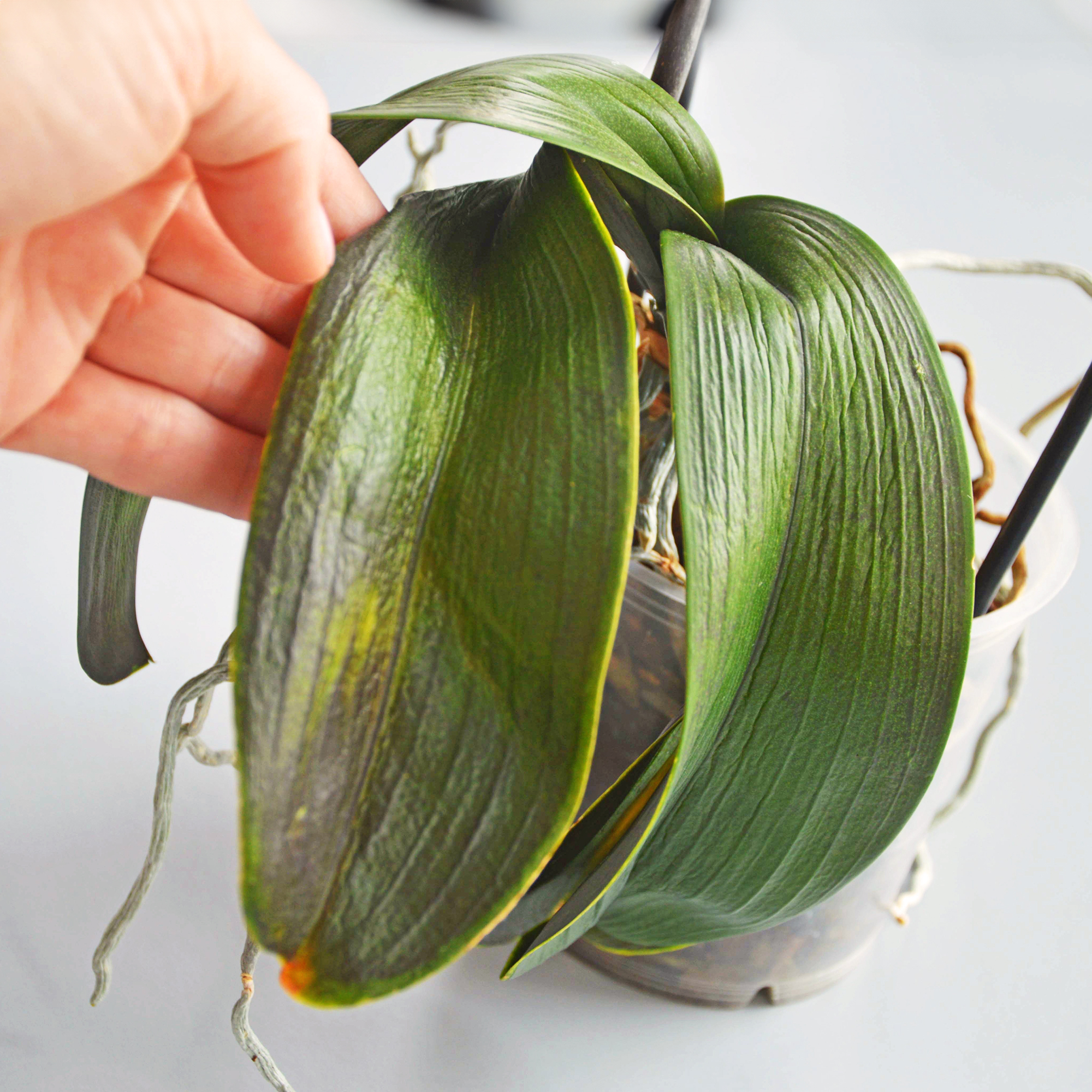 Orchid Leaves Wrinkled? 5 Common Causes & How To Restore Their Vitality
Orchid Leaves Wrinkled? 5 Common Causes & How To Restore Their VitalityAre your beloved orchid's leaves wrinkled? Worry not! Here are the most common causes for puckered orchid foliage, plus how to plump them back up.
By Tonya Barnett
-
 8 Rare Orchids That Make Stunning Houseplants – Some Are Surprisingly Easy To Grow
8 Rare Orchids That Make Stunning Houseplants – Some Are Surprisingly Easy To GrowDiscover unique orchids that will add exotic beauty to your home. Some make easygoing houseplants, while others offer a challenge for more seasoned growers.
By Melanie Griffiths
-
 Why Is My Orchid Dying? 5 Common Causes & How To Save It Before It's Too Late
Why Is My Orchid Dying? 5 Common Causes & How To Save It Before It's Too LateStruggling to keep your orchid alive? Learn the top mistakes that cause orchids to decline – and the simple fixes to bring yours back to life.
By Bonnie L. Grant
-
 Warm Up Your Winter With Indoor Reds! 8 Red Amaryllis Varieties For Sizzling Seasonal Interest
Warm Up Your Winter With Indoor Reds! 8 Red Amaryllis Varieties For Sizzling Seasonal InterestWell loved as a bold decorative holiday bloomer, the red amaryllis is a hot favorite for winter displays. These red amaryllis varieties are guaranteed to fire up the season
By Tonya Barnett
-
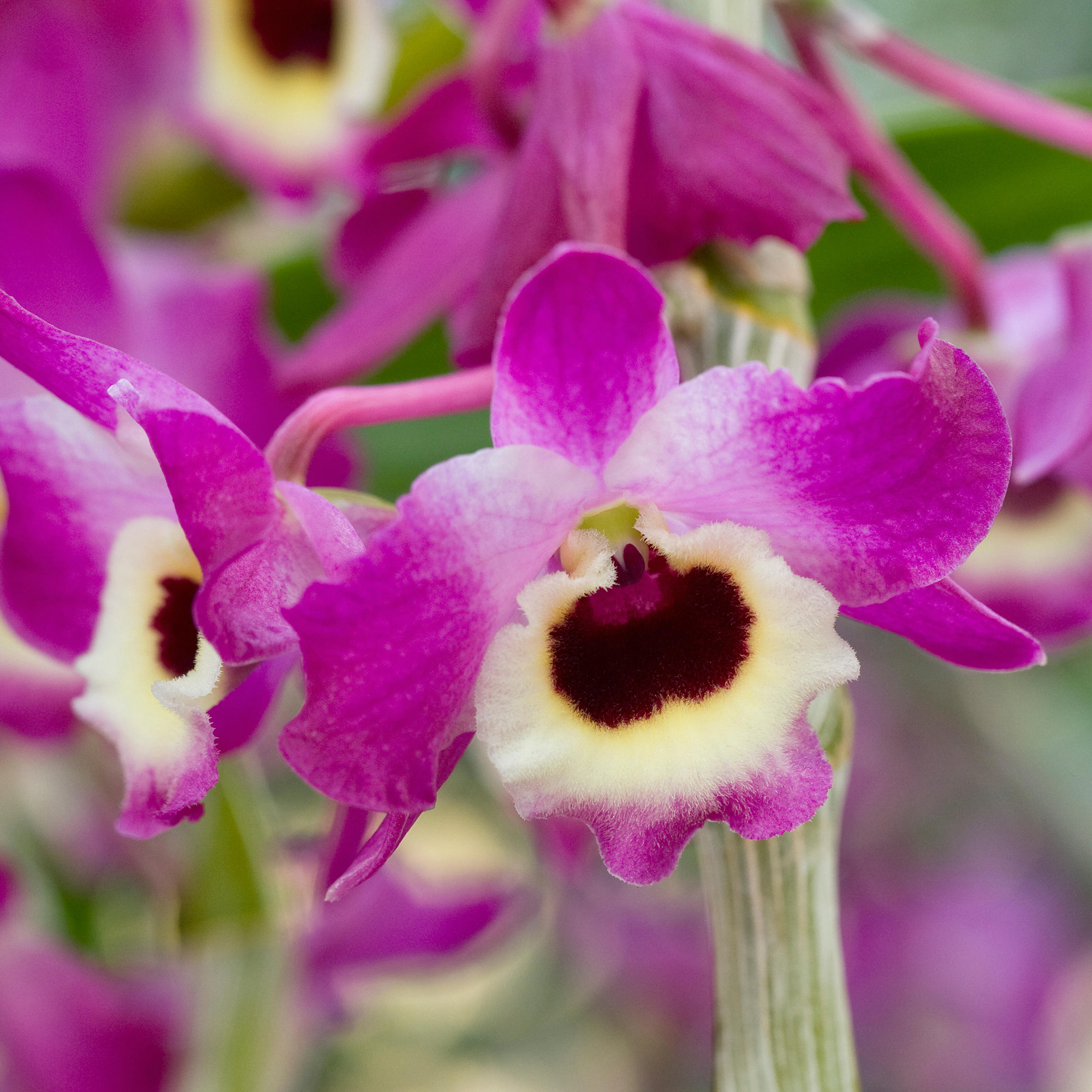 Dendrobium Nobile Orchid: How To Care For This Graceful, Easy-Going Houseplant
Dendrobium Nobile Orchid: How To Care For This Graceful, Easy-Going HouseplantLearn how to care for elegant dendrobium nobile orchids. These undemanding plants make a stunning addition to any orchid collection and are ideal for beginners.
By Bonnie L. Grant
-
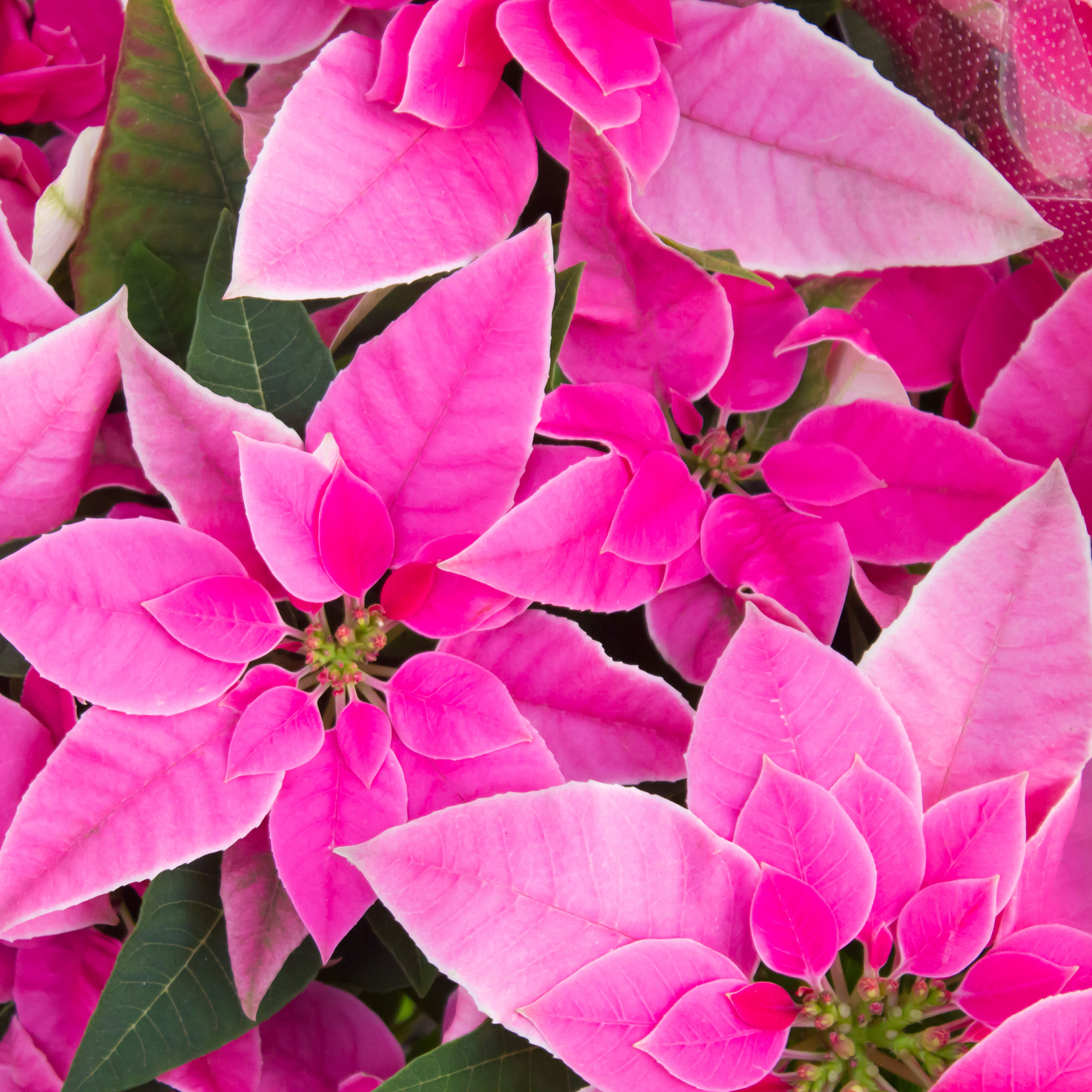 Poinsettia Pinks: 7 Pink Poinsettias To Grow For Neon Hot Tones And Cool Pretty Pastels
Poinsettia Pinks: 7 Pink Poinsettias To Grow For Neon Hot Tones And Cool Pretty PastelsWhile the traditional red poinsettia is a staple of many homes over the holiday period, they are not your only option. For cheerful brights or pastels, why not grow pink poinsettias?
By Tonya Barnett
-
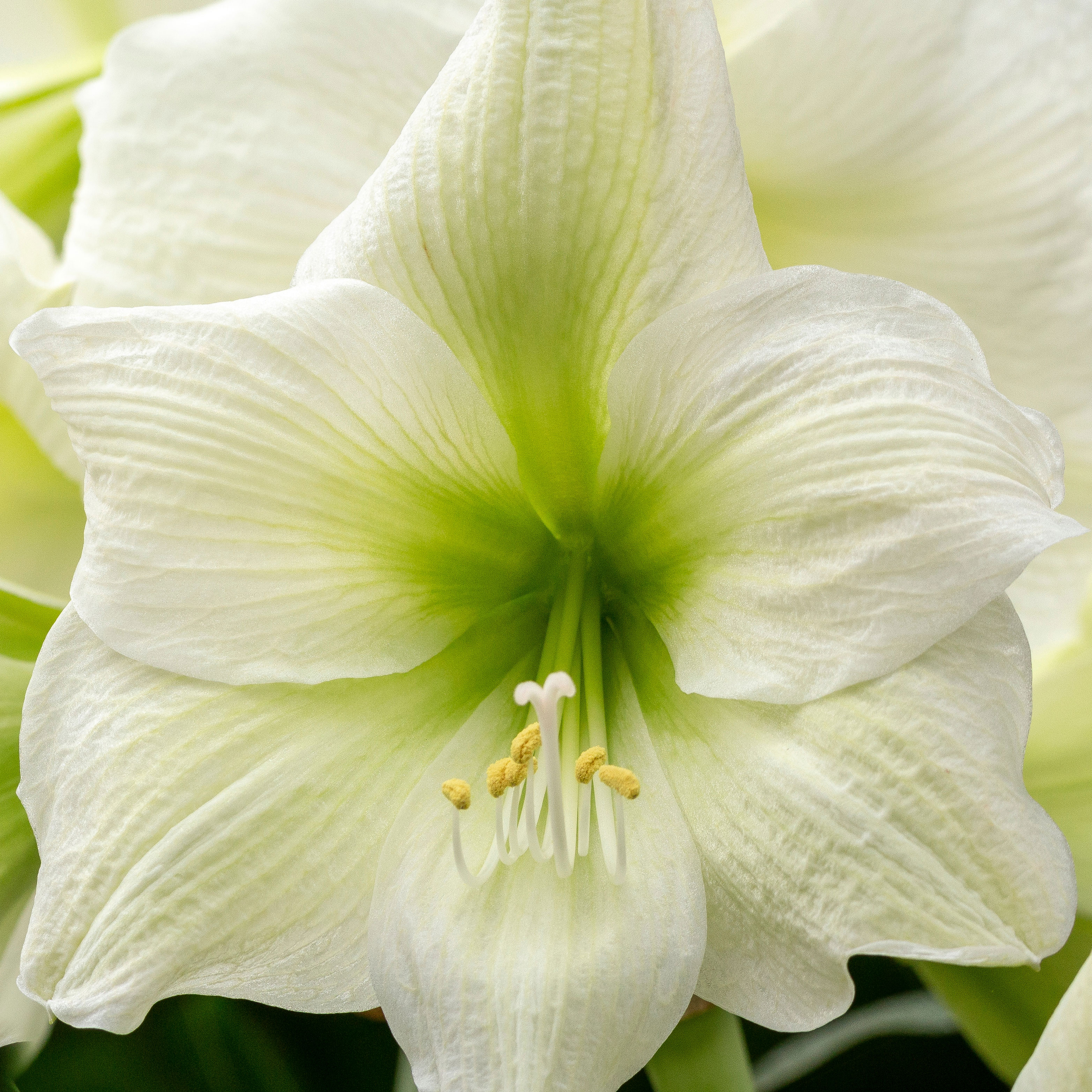 Want Amaryllis But Not Red? Try These 8 White Amaryllis Varieties For The Ultimate Elegance
Want Amaryllis But Not Red? Try These 8 White Amaryllis Varieties For The Ultimate EleganceYou’re probably familiar with the crisp red blooms of the traditional amaryllis – but if you feel like something more unusual and elegant, why not try white amaryllis?
By Mary Ellen Ellis
-
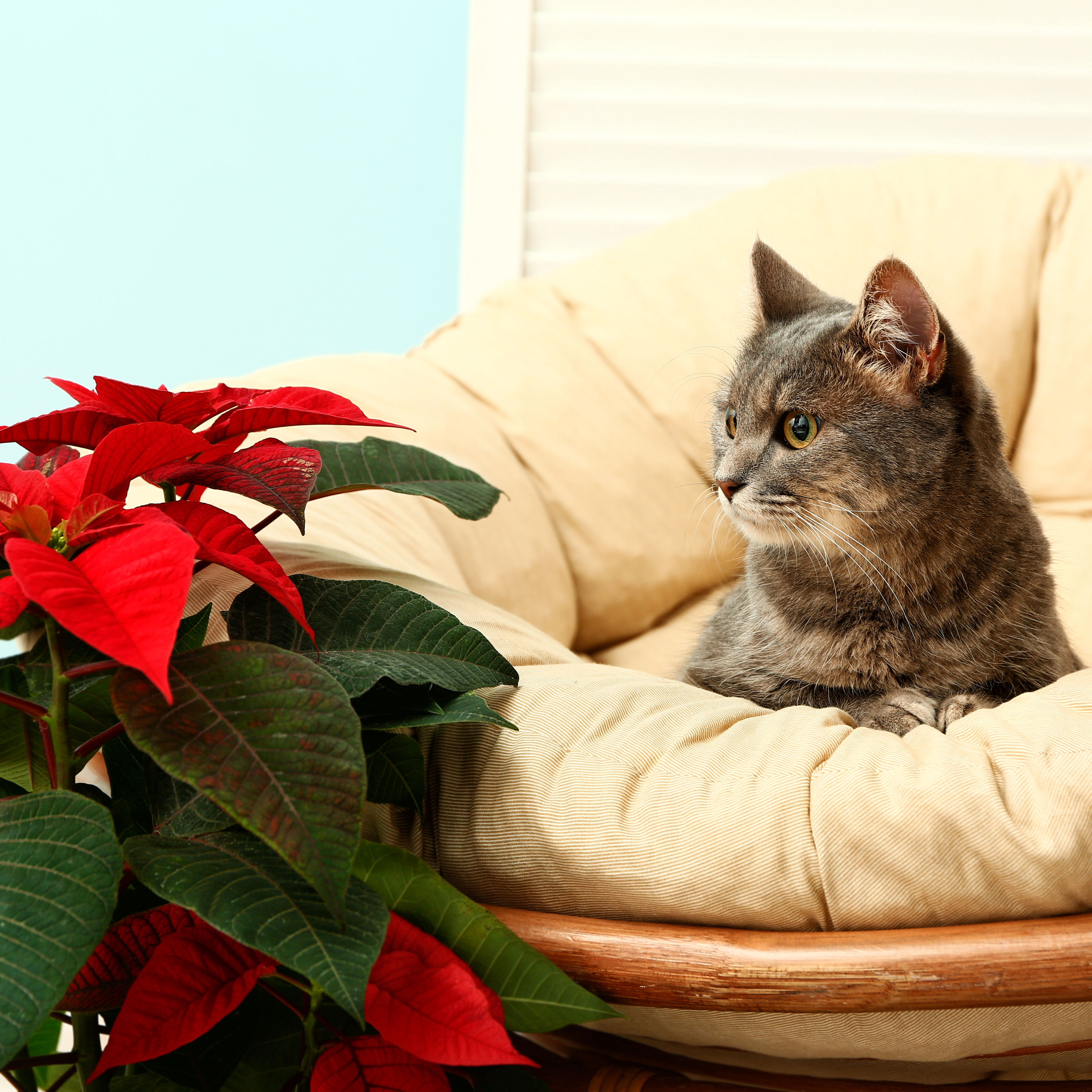 Are Poinsettias Poisonous To Cats? What You Need To Know For Happy, Healthy Felines
Are Poinsettias Poisonous To Cats? What You Need To Know For Happy, Healthy FelinesThey have the potential to brighten up homes long after the holidays, but are poinsettias poisonous to cats? Make sure you read this before mixing the two!
By Susan Albert